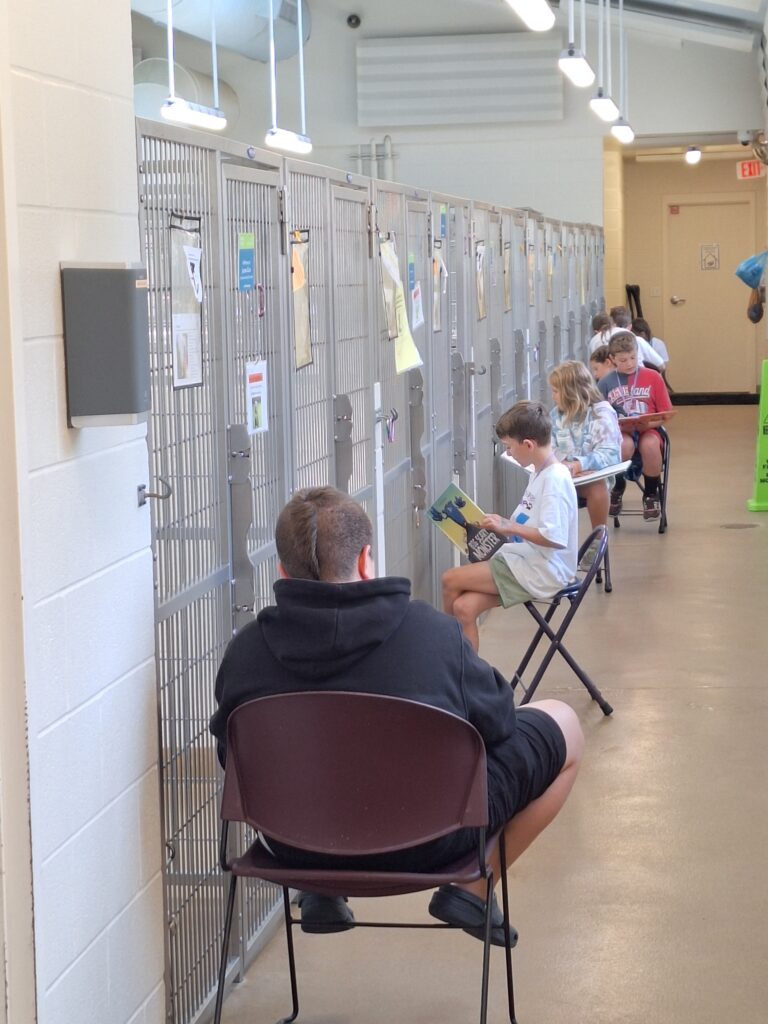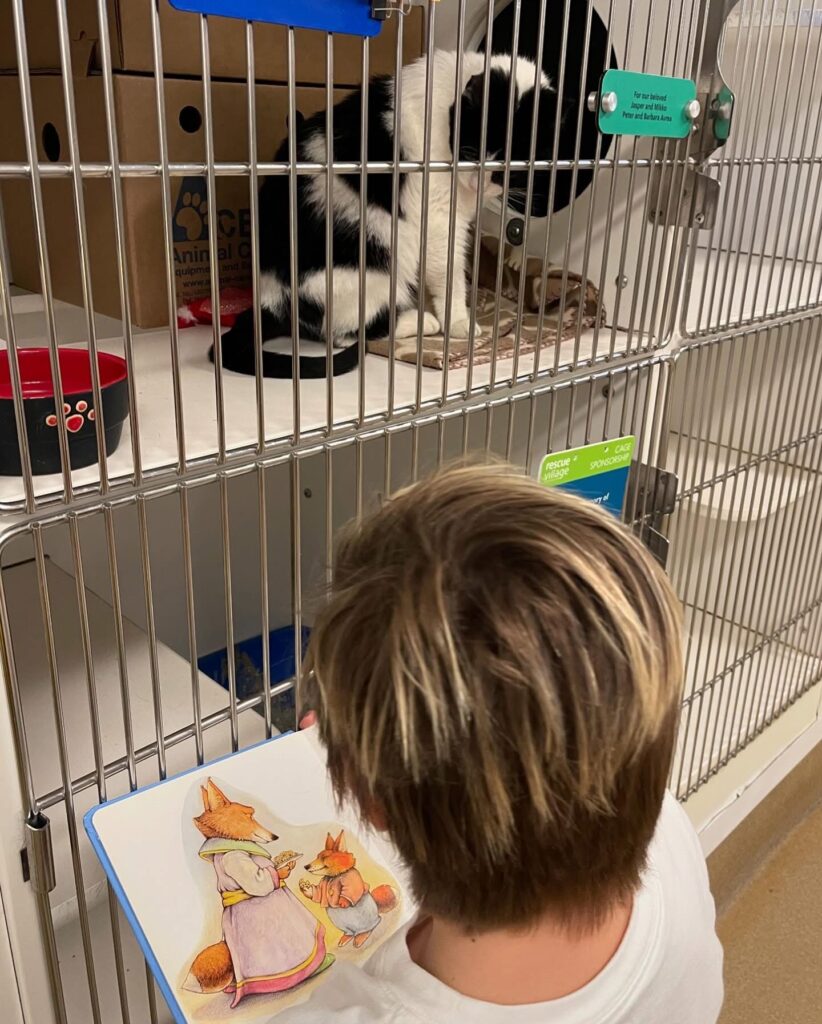Reader Volunteers Provide Animal Enrichment
Rescue Village provides fear-free enrichment to the animals through its volunteer reading program.
The reading program was launched in 2017 and is a “shelter buddy” program, designed to be a safe and meaningful way for volunteers of all ages to provide comfort and companionship to animals while in their kennel or cage.
Volunteers in the reading program receive an orientation on how to engage with the animals in a fear-free manner. According to the Fear Free Shelter Program, this is important because:
Admission to any shelter or rescue is stressful for animals because of the abrupt change in their environment. The strange sights, smells, and sounds combined with the presence of unfamiliar people and animals cause uneasiness, thus almost all animals experience at least some degree of fear and anxiety following admission. Their day-to-day interactions may be inconsistent and unpredictable, making it difficult for them to learn what to expect and more difficult for them to adapt.
A fear free sheltering approach addresses the emotional needs of the animal while at the shelter, even for short-term residents. Rescue Village strives to “apply key strategies and techniques designed to reduce the negative emotional states that are commonly experienced by shelter and rescue animals—including fear, anxiety, stress (FAS), and frustration—and increase their enrichment opportunities.”
For instance, reducing the noise level on the adoption floors, playing soft music, or having a kind reading companion keep the animals company and to calm their nerves makes a big difference, helping the animals with their coping and social skills.
There is nothing more heartwarming at the shelter than to look down the row of the dog adoption pavilion at a group of readers or kids from camp, each giving one dog all their attention. When the volunteer begins reading, a dog may be at the back of its cage, scared and frightened. Eye contact is avoided, and the reader sits — quietly reading aloud (knowing the dog’s hearing is much better than any human’s!).
Through the gentle cadence of the reader’s voice, often, the animal begins to come closer to the front of the kennel or cage. The volunteer continues to read, and soon the animal is sitting at the front of its cage, ears up, listening, and sometimes they will lay down and shut their eyes, a rare occurrence during the day for the dogs.
Readers not only help the scared animals, but they also help reduce the cage frustration that some dogs get while at the shelter. They want so badly for people to pet them and pay attention to them. So much so that one dog barking can get the entire adoption floor barking. When a reader sits with that one frustrated dog, the entire floor is much quieter, and more dogs experience less anxiety.
By having volunteers read to the cats and dogs outside of their cage or kennel, it provides a safe and healthy way to interact with the animals without asking anything of them. Not all the animals engage with the readers, and sometimes, it takes a while for a resident to warm up, but the reader’s presence is helpful because with repetition, the animal learns that nothing bad will happen. They learn that readers are friendly, and in fact, they may even get a treat if they come out from their hiding spot in their cage! Soon, the animals become more likely to be up front and engage when adopters visit, becoming less fearful and overwhelmed by their environment.
Some readers fall in love and adopt their favorite shelter buddy, and sometimes they are present when one of their buddies gets adopted!
Rescue Village has drop-in reading hours during the week and on Sundays, so it is a convenient way for volunteers or families to get involved and help the animals in a very direct way. Student volunteers can receive school service hours for their time spent with the animals as they practice their reading skills.
To become a reading volunteer, apply HERE and our Community Engagement Manager will be in touch!

